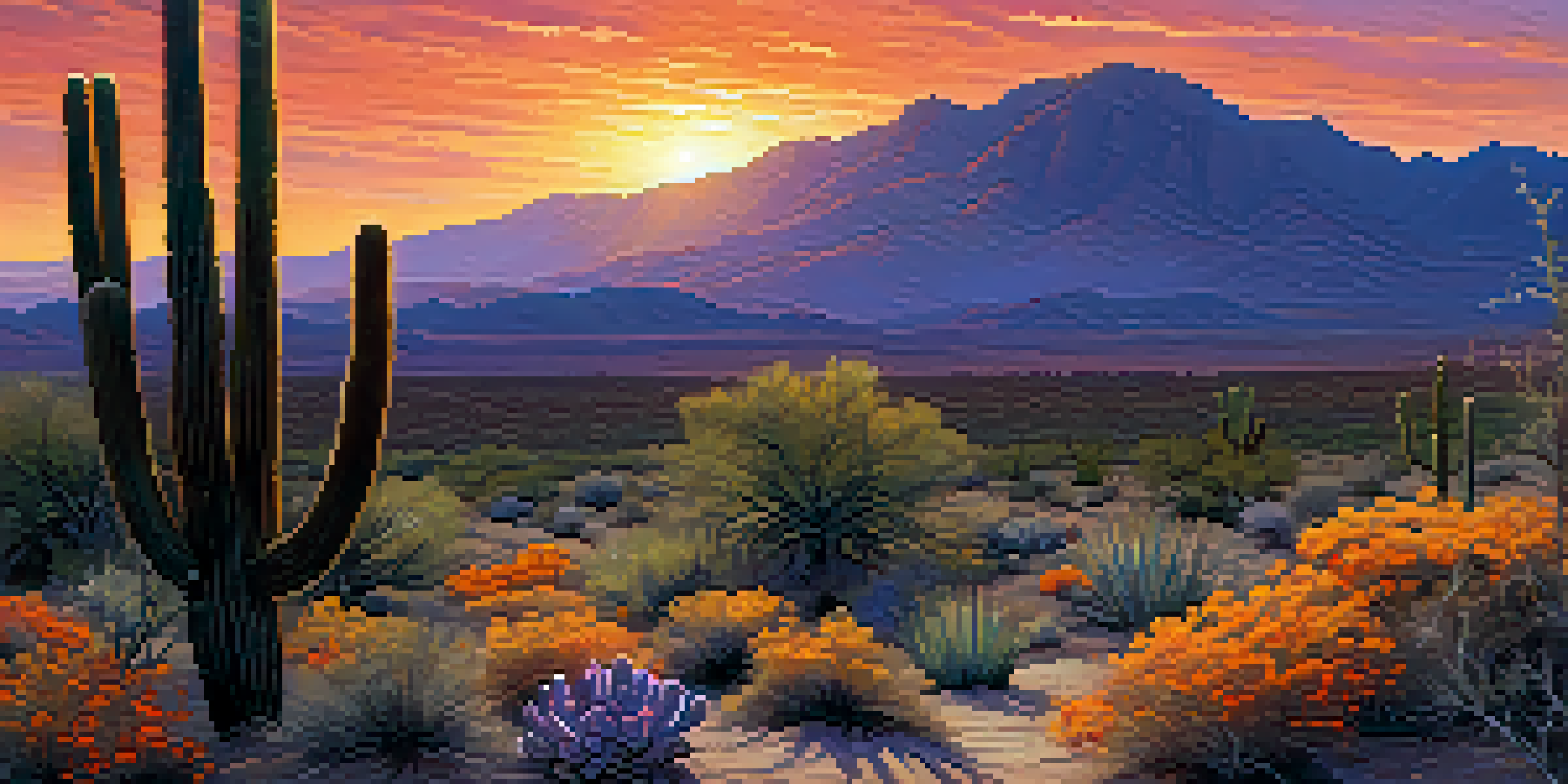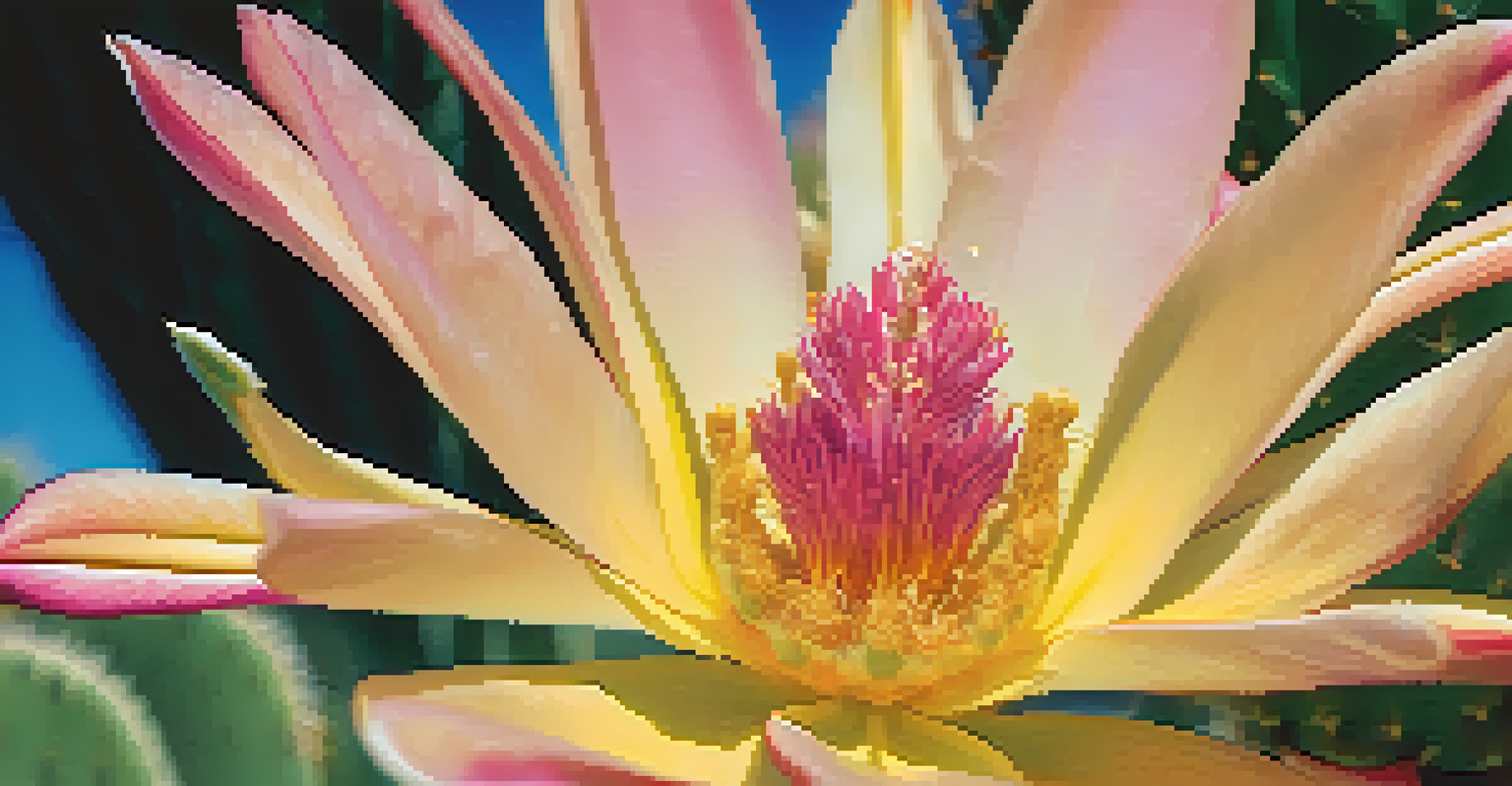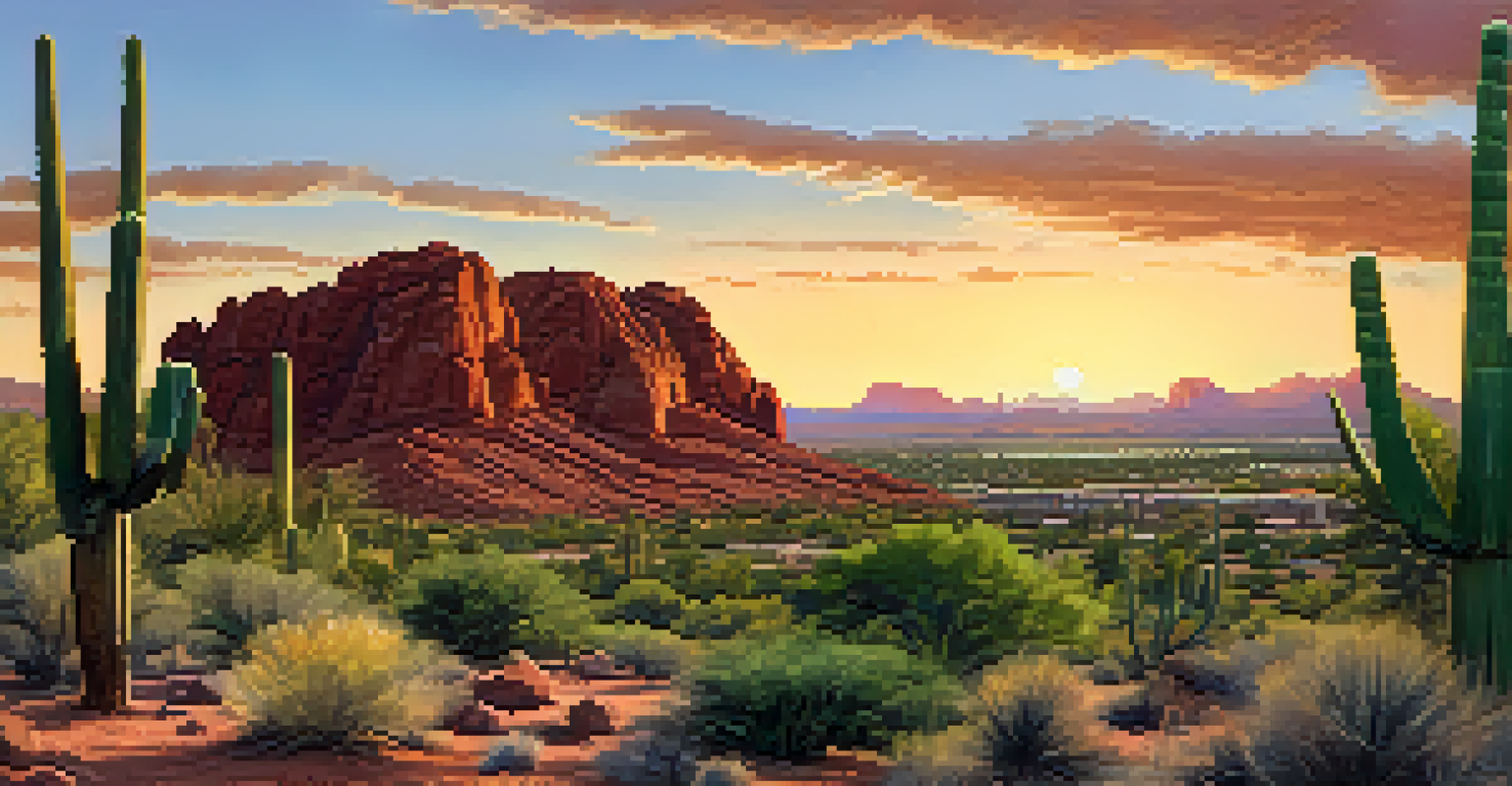Exploring Desert Landscapes: Photography in Phoenix

Understanding Phoenix's Unique Desert Environment
Phoenix is located in the Sonoran Desert, a diverse ecosystem known for its stunning landscapes and rich biodiversity. This environment features iconic cacti, rugged mountains, and vibrant sunsets that make it a photographer's paradise. Understanding the unique flora and fauna in this area can enhance your photography, allowing you to capture the essence of the desert.
The desert tells a different story every time one ventures into it.
The Sonoran Desert is home to the saguaro cactus, which can grow to be over 40 feet tall and live for more than 150 years. These giants serve as a striking focal point in many photographs, especially during golden hour when the sun casts a warm glow. Additionally, the variety of wildlife, from desert tortoises to vibrant songbirds, adds depth and intrigue to your shots.
By familiarizing yourself with the natural elements of the Phoenix desert, you can plan your photography sessions around the best times to capture these features. Early mornings or late afternoons are ideal for softer light and more dynamic shadows, making your photos pop.
Essential Gear for Desert Photography in Phoenix
When heading out to photograph the desert landscapes of Phoenix, having the right gear is crucial. A sturdy camera with interchangeable lenses allows for versatility in capturing both wide landscapes and detailed close-ups of desert flora. Don't forget to bring a tripod to stabilize your shots, especially during low-light conditions.

In addition to your camera, consider packing extra batteries and memory cards, as desert conditions can be harsh on electronics. A polarizing filter can also enhance your images by reducing glare from the sun and enriching colors, particularly in the vibrant desert landscape. It’s an easy addition that can make a significant difference.
Explore Phoenix's Desert Wonders
Understanding the unique flora and fauna of the Sonoran Desert enhances photography opportunities in Phoenix.
Lastly, don’t underestimate the importance of a comfortable backpack and appropriate clothing. The desert can be unforgiving, with fluctuating temperatures, so wearing layers and staying hydrated is key to enjoying your photography adventure.
Best Locations for Photography in Phoenix
Phoenix boasts numerous stunning locations perfect for capturing desert landscapes. One of the most popular spots is Papago Park, known for its unique red rock formations and iconic Hole-in-the-Rock, offering breathtaking panoramic views of the city. This area provides varied terrain that enhances the composition of your photographs.
Photography is the story I fail to put into words.
Another must-visit location is the Desert Botanical Garden, where you can explore an extensive collection of desert plants, cacti, and native wildlife. The garden’s carefully curated paths allow for excellent photo opportunities and a chance to learn about the local ecosystem. It’s the ideal place for close-ups of unique plant life.
Don’t forget the iconic South Mountain Park, one of the largest municipal parks in the country. Its trails lead to stunning vistas that showcase the vast desert below, especially at sunrise or sunset. These dynamic landscapes provide incredible backdrops that can elevate your photography portfolio.
Timing Your Photography Sessions for Optimal Light
Timing is everything in photography, especially in a desert environment like Phoenix. The golden hour, which occurs shortly after sunrise and before sunset, offers the best natural lighting. This soft, warm light can transform ordinary landscapes into extraordinary images, casting long shadows and enhancing colors.
Midday sun can be harsh and create unflattering contrasts, making it less ideal for landscape photography. Instead, consider using this time for scouting locations or experimenting with different angles. This way, you can maximize your shooting time during the optimal hours while still being productive.
Essential Gear for Desert Shoots
Having the right camera gear, including a sturdy tripod and extra batteries, is crucial for capturing stunning desert landscapes.
Additionally, keep an eye on the weather, as desert storms can create dramatic skies that add depth to your photographs. A sudden downpour can lead to stunning after-storm images, so being flexible with your schedule can yield unexpected rewards.
Incorporating Wildlife into Your Desert Photography
The Sonoran Desert is teeming with wildlife that can enhance your photography portfolio. From the iconic roadrunner to the elusive bobcat, capturing images of these creatures adds a unique dimension to your desert landscapes. Patience is key when waiting for wildlife to appear, so consider bringing along a telephoto lens to snap close-ups without disturbing their natural habitat.
Birdwatching can be particularly rewarding in the desert, especially during migration seasons. Setting up near water sources, like ponds or streams, can attract various species and provide excellent opportunities for striking wildlife photography. Don’t forget to bring binoculars to spot animals before they come into view.
Respecting wildlife and their environment is paramount. Always maintain a safe distance and follow ethical photography practices to ensure that you don’t disrupt their natural behavior. This approach not only protects the animals but also allows for more genuine and candid photographs.
Editing Tips for Stunning Desert Photography
Once you've captured your stunning desert photographs, the next step is editing. Utilizing software like Adobe Lightroom or Photoshop can help enhance your images by adjusting exposure, contrast, and saturation. A little tweaking can turn a good photo into a breathtaking one, especially when showcasing the vibrant colors of the desert.
Consider applying subtle filters that reflect the warm tones of the desert landscape, making your images feel more cohesive. However, be careful not to overdo it; the goal is to enhance your photos while keeping them authentic. A balanced edit will highlight the natural beauty of the Phoenix desert.
Optimal Timing for Stunning Photos
Capturing images during the golden hour and being flexible with weather changes can significantly improve your desert photography.
Lastly, don’t forget about cropping and composition. Sometimes, a slight adjustment can draw more attention to your subject or improve the overall balance of the photograph. Take your time in this phase, as it can make a world of difference in how your work is perceived.
Sharing Your Desert Photography with the World
Once you’ve curated and edited your desert photography, it’s time to share it with the world. Social media platforms like Instagram and Pinterest are perfect for showcasing visual art, allowing you to reach a broader audience. Engaging with communities dedicated to photography can also provide valuable feedback and support.
Consider creating a portfolio website to display your best work. This not only serves as a professional platform but also allows potential clients to see your style and expertise. Including a blog section where you share your photography experiences can add a personal touch and connect you with your audience.

Networking with other photographers and participating in local exhibitions can also enhance your visibility. Sharing your passion and knowledge can lead to collaborations and new opportunities, further enriching your photography journey.